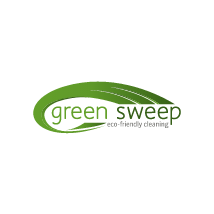Quick Answer:
To deep clean floors without damaging them, use the right products and methods for each surface—gentle cleaners for hardwood, grout scrubbing for tile, steam or shampoo for carpets, and non-abrasive solutions for vinyl. 👉 Check out our Deep Cleaning Services
Safe Methods for Deep Cleaning Floors
Different flooring materials require different care. Using the wrong product or too much water can cause permanent damage, so it’s important to follow the right process for each type.
Hardwood Floors
- What to Do: Sweep or vacuum first, then mop lightly with a damp microfiber mop and wood-safe cleaner.
- What to Avoid: Excess water or harsh chemicals that can warp or dull the wood.
Tile Floors
- What to Do: Vacuum and mop, then scrub grout lines with a brush and a mixture of baking soda and water or grout cleaner.
- What to Avoid: Acidic cleaners on natural stone tiles, as they can cause etching.
Vinyl Floors
- What to Do: Use a pH-neutral cleaner with warm water and a soft mop.
- What to Avoid: Abrasive scrubbers that can scratch the surface.
Carpeted Floors
- What to Do: Vacuum thoroughly, spot clean stains, and use a carpet shampooer or steam cleaner for a deep refresh.
- What to Avoid: Over-wetting carpets, which can lead to mold or mildew growth.
👉 Check out our Deep Cleaning Services
Frequently Asked Questions
Q: How often should I deep clean hardwood floors?
A: Every 2–3 months, with regular sweeping in between.
Q: Can I steam clean all types of flooring?
A: No. Steam can damage hardwood and some vinyl. It’s best for tile and some carpets.
Q: What’s the safest homemade cleaner for floors?
A: A mix of warm water and a few drops of mild dish soap works well for most surfaces.
Q: Should I move furniture when deep cleaning floors?
A: Yes, at least once or twice a year, to prevent dirt buildup under and around it.
Q: Do professionals use special floor cleaners?
A: Yes. Professional services use industry-grade products that are safe and effective for each flooring type.

